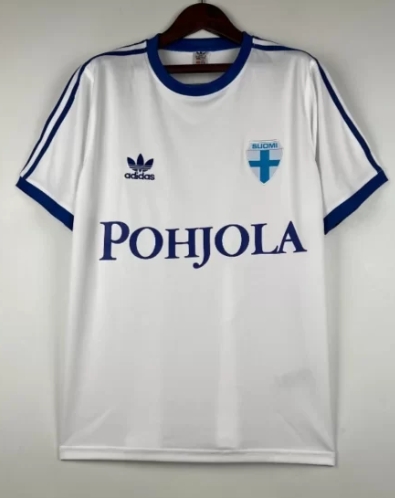
Finland’s national soccer team, known as “Huuhkajat” (the Owl), has experienced a long and often challenging journey in the world of football. Despite being one of the lesser-known soccer nations, Finland has shown remarkable resilience and determination on the international stage. From its early beginnings to significant achievements in recent years, Finnish soccer has often symbolized a passion for the game and a relentless pursuit of success.
The roots of soccer in Finland trace back to the late 19th century. The game began to gain popularity, and the Finnish Football Association (Suomen Palloliitto, or SPL) was established in 1907. Finland played its first official international match on July 18, 1911, against Sweden, which ended in a 5-1 defeat. Despite this rocky beginning, these formative years laid the groundwork for the emergence of Finnish soccer.
During the early 20th century, Finnish soccer was played mainly on a regional basis, and the national team participated in friendly matches and regional tournaments. However, Finland was not yet a prominent competitor on the international scene, facing difficulties in establishing its identity in the footballing world.
finland soccer jerseys football YUPOO china B2B2C Wholesale Supplier Branded national finland soccer jerseys retro shirts, join us on whatsapp | Yupoo fashion national finland soccer jerseys players jerseys football retro jerseys reseller online store , Yupoo jerseys Replica top version for yupoo wholesale drop shipping jerseys to worldwide.
In the years leading up to World War II, Finland began to strengthen its national team, participating in various international competitions. The team made its debut at the Olympic Games in 1912 and eventually qualified for the 1936 Berlin Olympics, where they faced tough competition.
After the war, Finland played its first official FIFA World Cup qualifying matches starting in 1950. However, the national team struggled to make a significant impact in international tournaments, often falling short during the qualification rounds for World Cups and European Championships.
The 1970s and 1980s marked a period of gradual development for Finnish soccer. The national team continued to work hard for a breakthrough, participating in ongoing qualification campaigns but experiencing limited success. During this time, notable players such as Tapio Lehtinen and Miikka Laitinen emerged, helping raise the profile of Finnish soccer.
In the 1980s, Finland made strides in its international performance. The team qualified for the 1980 UEFA European Championship in Italy, bringing renewed hope and excitement to Finnish soccer fans. Ultimately, Finland's performance in the tournament was disappointing, as they were eliminated in the group stage without a win.
As the 1990s rolled in, Finnish soccer faced another period of struggle. The national team sought to put together a competitive squad but often fell short of qualification for major tournaments. The 1994 FIFA World Cup qualifying campaign was particularly disappointing, as Finland managed only one victory.
However, the emergence of talented players, such as Jari Litmanen, who went on to become one of the most respected Finnish footballers in history, began to reignite hopes for a brighter future. Litmanen’s talent and charisma helped garner attention for Finnish soccer on the international stage, but the team still had work to do in terms of achieving consistent performances.
The 2000s proved to be a pivotal era for Finnish soccer. After years of struggling, the national team began to show promise and potential. The introduction of a strong youth development system and the focus on nurturing homegrown talent began to yield results.
In the early 2000s, Finland experienced some notable successes in international competitions. During the qualification rounds for the 2004 UEFA European Championship and the 2006 FIFA World Cup, the national team garnered respect for their competitive spirit, but ultimately fell short of qualification.
However, the team continued to develop a new wave of players, including the likes of Mikael Forssell, who emerged as a key figure in Finnish soccer.
The 2010s marked a renaissance in Finnish football. Under the guidance of various coaches, Finland began to gel as a cohesive unit, and the national team started making headway in international competitions. In 2016, Finland participated in its first European Championship qualifiers in a long time. The Huuhkajat displayed promising performances, sparking excitement among fans.
One of the most notable achievements came during the 2018 FIFA World Cup qualifying campaign, where Finland displayed impressive performances. While they did not qualify, their determination and competitive spirit resonated with supporters, fostering a renewed sense of optimism.
Finland yupoo soccer jerseys achieved a monumental milestone by qualifying for the UEFA Euro 2020 tournament—held in 2021 due to the COVID-19 pandemic—marking the first time in the nation’s history that they had reached a major international tournament. This historic achievement had been a long time coming for the small Nordic nation, uniting fans and players in celebration.
During the tournament, Finland was placed in Group B, alongside Belgium, Denmark, and